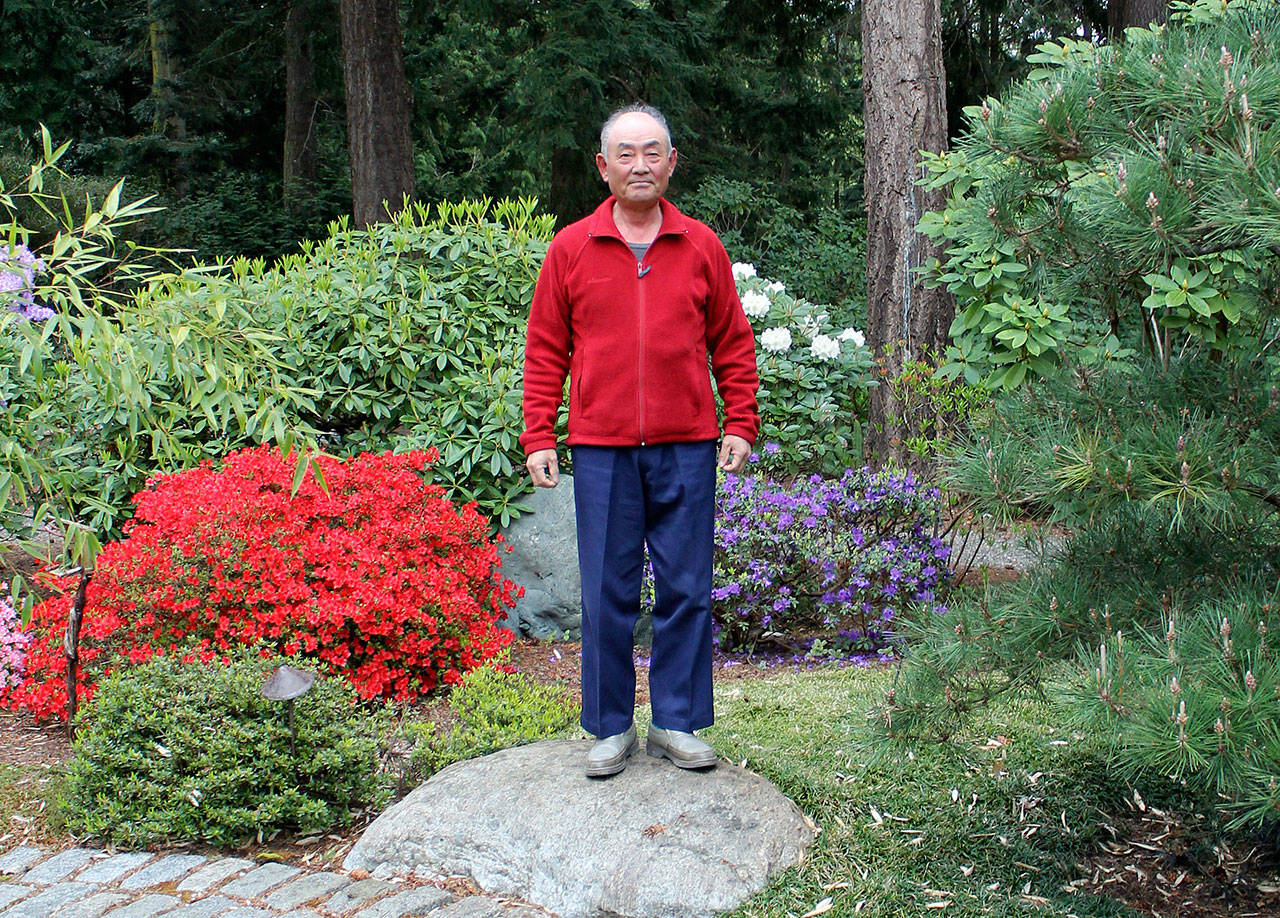For some, gardening and landscaping is a backbreaking chore. For others, such as those dedicated to the Japanese method, it’s an art form deserving of a Super Bowl for gardens. Yes, such a thing exists.
Luckily for South Whidbey, Masa Mizuno, one of the perceived Japanese “master gardeners,” will make his annual return to share that gardening philosophy, his wisdom and techniques.
“Each time Masa has come to Whidbey, he’s brought something fresh and new, not just about landscaping principles, but how to apply them in one’s own life,” Northwest Language and Cultural Center Director Josette Hendrix said.
The Northwest Language and Cultural Center (NWLACC) is welcoming Mizuno back to South Whidbey to raise funds for the center’s Global Cultures Program, which the NWLACC offers to South Whidbey schools for free as a way to teach youth about global matters.
Mizuno is leading a pruning workshop from 10 a.m. to 1 p.m. on Saturday, where he will demonstrate the Japanese pruning technique, discuss the gardening approach of his homeland and answer questions from the attending crowd. Tickets cost $75, and lunch will be provided. Reservations can be made on the NWLACC website.
The workshop is held at a different garden on South Whidbey every year, and this time around the demonstration will be held at Clinton resident Sievert Rohwer’s private residence. The garden brings a new flavor to the annual workshop, as Rohwer’s space is a European-style garden without the traditional Japanese greenery such as the country’s native maples and pine trees. The garden is also within a 40 acre plot of land where Rohwer is aiming to restore the natural wetlands to the area. Visitors will have the opportunity to tour the acreage.
“It’ll be exciting to see what Masa does with the property, because it’ll be a fusion of Japanese gardening techniques and French twists,” Hendrix said. “He always manages to show others how to look at organizing their garden or landscape in relation to space and time, regardless of what kind of garden he’s demonstrating on.”
According to former workshop host and Clinton resident Norm Bodine, it’s a rigorous process to reach Mizuno’s stature as a “master gardener.” Mizuno has been working in gardens in Japan and the United States for more than 30 years, but served as a gardening apprentice in both Osaka and Tokyo before then. It’s a common process in Japan.
According to the Japanese tradition, it takes years before a student can even start gardening, as the pupil is supposed to closely study their teacher and perform minuscule tasks before they can take up any shears. It’s similar to the process of becoming a sushi chef, where students have to work in restaurants for years as dishwashers and bus boys before they can even handle the rice, let alone the seafood.
“The Japanese feel you have to go through the process of being a student, where you start off sharpening tools,” Bodine said. “After years of doing this, the students can finally land a job in one of these gardens, of which there are many. I don’t know of any apprenticeship program in the U.S.”
Mizuno eventually worked on gardens in Tokyo after years of learning from elder gardeners, and later landed jobs in famed gardens across the country such as the Adachi Art Museum garden in the Shimane Prefecture. But the City of Portland managed to bring him to the Pacific Northwest in 2000 to be the landscape director of the Portland Japanese Garden, and Mizuno has stayed in the city ever since. He later started his own landscaping business, and has worked on the Japanese garden in Seattle’s Washington Park Arboretum. He’s also worked on numerous private gardens across South Whidbey.
Attendees at the workshop will see a glimpse of the traditional Japanese gardening philosophy. Mizuno will explain how to approach gardening and landscaping, which heavily emphasizes sight lines and highlighting the beauty in a single plant. Bodine says the Japanese try not to crowd plants next to each other, so they can stand alone and viewers can “see the whole plant.” Natural beauty is also emphasized, as plant shapes are intended to look natural rather than over-groomed or symmetrical.
“The Japanese style is tied so much to the relationship with nature that is both caring and respectful,” Hendrix said. “It’s not about the gardener over-imposing, it’s rather working with the nature to reveal the inherent beauty in each plant.”
Bodine says opportunities to learn from gardeners of Mizuno’s caliber are rare. People of his expertise don’t come around that often in the first place, and Bodine adds many Japanese master gardeners’ grasp of the English language isn’t extensive. It’s one thing to follow their actions, Bodine said, but a different level of understanding is reached when students can open a dialogue with the mentor.
Luckily, Mizuno is different. Bodine and Hendrix say Mizuno is a highly social person always looking to demonstrate the Japanese method, teach others about the style and meet new people. He’s also aware that students could try out his methods on their personal gardens, considering the Whidbey climate and flora is somewhat similar to Japan, according to Bodine.
“Masa has this wonderful way of teaching people what to pay attention to,” Hendrix said. “He’ll be teaching people not only about the techniques, but the larger context of being in harmony with your garden.”


